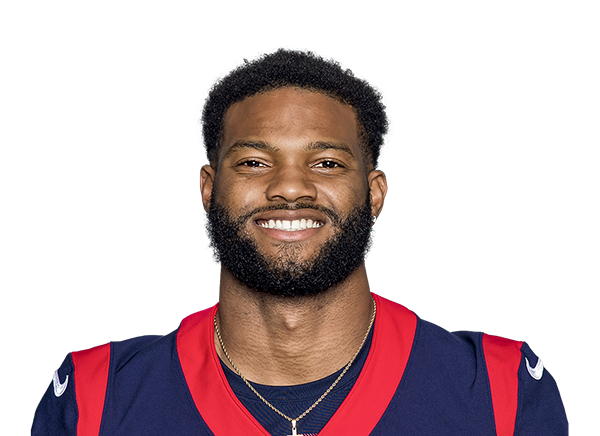Marlon Mack: The Dynasty Running Back You Need to Buy
A couple of weeks ago, I wrote an article detailing the reasons why you need to be buying Tyler Boyd in dynasty. If you have not read it yet, I encourage you to do so. I want to take that same premise and apply it now to the running back position.
Running back is a much different animal than wide receiver. I don’t have data to back this up, but my general intuition says that it’s easier to find wide receiver value (sleepers like Boyd) than it is to find running back value. Usually, it takes an injury to get any sort of running back value and even then, it seems like hardly any of those backups are productive for more than half a season.
Today though, I have a running back who, according to my model, is a tremendous value in dynasty leagues. I know everyone was surprised that my model had Boyd as a top ten dynasty receiver, so you will likely also be surprised to learn that it has Marlon Mack as a top ten dynasty running back. So, let’s breakdown the reasons for this high ranking, as well as why you should be acquiring Mack.
College Profile
Let’s start with Mack and his time at the University of South Florida. Like at receiver, there are boxes I like my running back prospects to check. Now, with running back there are more boxes to check than wide receiver, which actually indicates that running back is harder to predict than wide receiver. Unlike wide receivers, not checking a box or two isn’t as big of a deal for running backs. Enough backdrop, here are the boxes I look for:
1. College Dominator
- The average of a running back’s percentage of total team yards and touchdowns
- Checks the box if: Dominator is at least 21.5%
2. Market Share of Receptions
- A running back’s best percentage of team receptions in any year
- Checks the box if: Best Reception Market Share is 8% or above
3. Speed Score
- Adjusts a player’s 40-time for their weight
- Checks the box if: Speed Score is 100 or above
4. Agility Score
- A combined score of the three-cone and short shuttle
- Checks the box if: Agility score is 11.21 or lower
5. Draft Capital
- Checks the box if drafted on day one or two
So how did Marlon Mack do in these categories?
- College Dominator: 29.8%
- Best Reception Market Share: 12.4%
- Speed Score: 103.9
- Agility Score: Unknown
- Draft Capital: Round four/day three
Mack did not have a perfect running back profile due to the fact that he did not test in the agility drills at the combine and he does not have great draft capital. Not all is lost though.
I like to group running backs based on them meeting certain thresholds, and while the above thresholds are for what I consider to be elite running back prospects (Saquon Barkley, Todd Gurley, Ezekiel Elliott, Christian McCaffrey), Mack meets other thresholds for a category I call “Sleeper” running backs, which includes players like Mike Davis, Nyheim Hines, Benny Snell, and Kenneth Dixon. This group doesn’t have a great hit rate, but there is some potential.
To be fair to Mack, the only reason he falls in this category is due to being drafted on day three. If he had been drafted in round three, then he would fall into the “Long-Term Starter” category with the likes of Marshawn Lynch, James Conner, Joe Mixon, and Dalvin Cook.
Honestly, I think Mack needs to be treated as a “Long-Term Starter” since Indianapolis has passed on investing in a running back in day one or two for two straight years. Besides, in my model, a running back’s college profile matters a lot less after their second season which Mack just completed. So, to summarize, Marlon Mack definitely has questions on his profile, but overall it is a solid one with upside.
2018 Season
Since his college profile is mostly of little importance going forward, how did Mack do in the stats that predict future success for running backs? The most predictive stats for running backs are all based on either opportunity or production. They are Attempts Per Game, Rushing Yards Per Game, Touches Per Game, Targets Per Game, Total Yards Per Game, and PPR Points Per Game.
Let’s take a look at how Mack performed in each stat:
- Attempts Per Game: 16.3 (#8)
- Rushing Yards Per Game: 75.7 (#7)
- Touches Per Game: 17.7 (#12)
- Targets Per Game: 2.2 (#43)
- Total Yards Per Game: 84.3 (#14)
- PPR Points Per Game: 14.7 (#13)
Breaking these numbers down, it is clear to see that he was top ten in the NFL when it came to rushing opportunity and production, which are also the two best predictors of future success. It is also clear to see where Mack’s weakness is; the passing game.
Now, his receiving portfolio is a mixed bag. He had a 12.4% Market Share of Receptions in his best receiving season at USF, which is very solid. However, in the NFL, he has been pretty lackluster as a receiver so far. His catch rate in 2017 was 63.5% and 65.4% in 2018, which are not good. To put those percentages in context, Carlos Hyde had a 67% Catch Rate in 2017 as a 49er. The presence of Nyheim Hines also helps explain why Mack’s Targets Per Game are so low.
When you put these all together though, Mack comes out as the RB11 in Predictive Score. Combining his Predictive Score, college profile, experience, and his age of 23, it is not difficult to see why my model has him as the RB10 in dynasty. However, as we did with Tyler Boyd, let’s take a look to see if there are any outside sources who corroborate this higher ranking.
Additional Proofs
It’s always a fun exercise to look at a player comparison In the case of Mack, his best comparable player is Marshawn Lynch. Another similar running back is Sony Michel. Let’s compare their college profiles to see what similarities exist:
All three of these players have very similar height, weight, Dominator, Reception Market Share, and Speed Scores. We do not know Mack’s and Michel’s Agility Scores. One of the big differences between Mack and both Lynch and Michel is draft round. Both Lynch and Michel were first-round picks whereas Mack was a fourth-round pick.
Outside of draft round and the unknown Agility Scores, these three players are eerily similar. As I stated earlier, we almost don’t need to worry about Mack’s draft round considering the Colts’ apparent trust of him.
We looked at how Mack performed predictively, but let’s compare his 2018 stats to those of another running back who scored very similarly; Nick Chubb.
These two are so similar. Granted, Chubb didn’t play a full complement of snaps till week seven, but nevertheless, they quietly produced at similar levels. The big difference is that Chubb is much more valuable in dynasty than Mack. If you can acquire Chubb for cheap, jump at the chance.
Let’s take a look at what Pro Football Focus thinks of Marlon Mack.
Back in 2017, PFF had Mack as the number one running back in terms of breakaway runs.
Mack improved in both his run grade and his overall grade in 2018.
And of all recent Colts’ running backs, Mack boasts the highest average yards after contact.
Images from Pro Football Focus.
Here are some PFF articles on Mack:
- READ: Marlon Mack is stabilizing a previously inconsistent Colts backfield
- READ: Eight things we learned for fantasy football in the Wild Card round
Conclusion
Let’s review. Marlon Mack was a solid running back at USF, is a top ten running back according to my infallible model, the RB11 in Predictive Stats, looks like Marshawn Lynch and Sony Michel, produced like Nick Chubb, was the number one running back in terms of breakaways in 2017, improved in 2018, and was being heavily used by the Colts to end the season.
Just like with Tyler Boyd, you may not agree with my model’s assessment of Mack’s ranking, but you cannot disagree that he has some very positive indicators on his resume going forward. Best of all, Mack currently has an ADP of RB21. Happy trading!
- Top Ten Overrated Dynasty Players - January 31, 2020
- Dynasty Injury Impact: Week 14 - December 11, 2019
- Dynasty Injury Impact: Week 11 - November 21, 2019





























































